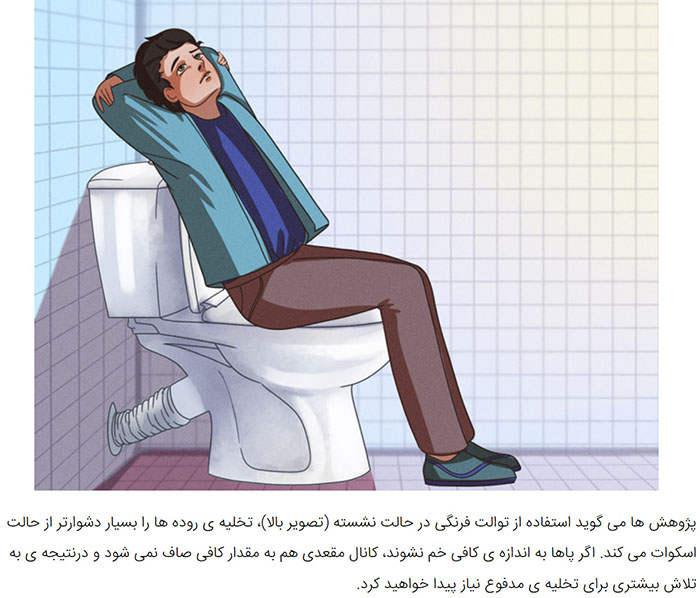Mastering Proper Toilet Etiquette: 6 Essential Steps for Healthier Habits
How to Use a Toilet Correctly:
There are many theories about how to sit on a toilet correctly. Experts recommend the following tips:
Sit on the toilet with your knees higher than your hips. If necessary, use a footstool or some other flat and stable object.
Lean forward and rest your elbows against your knees.
Relax, push out your belly, and straighten your back.
Squatting is one of the best positions for bowel movements. When you bend at the waist, the rectoanal canal turns into a straight line, which makes it easier for feces to exit your body naturally without straining too much.
However, sitting does not. With insufficient thigh flexion, this canal will “twist,” making it harder for stool to pass and requiring more effort from you.
How long should you stay in the toilet?
Each person spends a different amount of time on the toilet; someone tries to do everything quickly, while others stay there for an hour.
But experts say that sitting on the toilet bowl without getting up for too long can lead to excessive straining—1-2 minutes is enough. It puts pressure on the rectum and provokes internal hemorrhoids.
Avoid distracting yourself with gadgets and reading materials so that things don’t get complicated in there (and don’t forget about common sense).
Flush right: seat down, lid closed
There is only one way to flush water down—sstrictly speaking, with a lowered seat and a closed lid. Heat-resistant microorganisms can rise from open toilets by 10 inches above their level with every flush. All bathroom surfaces, including the floors, receive them safely.
By closing the lid when flushing from now on, you will reduce this spread inside as well as outside the bathroom. But despite such precautions, still wash hands after visiting any public restroom. Contaminated droplets fly even when you spit them out on the counter.
How to keep your toilet clean
It is a fallacy that flushing (especially with the lid down) cleans the toilet. Special disinfectants allow for more thorough cleaning, but for ordinary prevention, it is enough to clean everything once a week—ffor example, on weekends.
Toilet rim blocks will help you get a “cleaner flush,” and thick gel will allow you to disinfect not only the bowl but also all internal surfaces of the toilet bowl.
With such chemistry in your home bathroom arsenal, no limescale or bacteria are terrible! And even water-loving fungi probably won’t be able to gain a foothold in such conditions.
But don’t forget to wipe the seat every day (at least with special wipes) and do not neglect its classic wet cleaning from time to time: if necessary, wear gloves; if desired, paper or textile towels; any cleaning agent; and warm water in a bucket.





